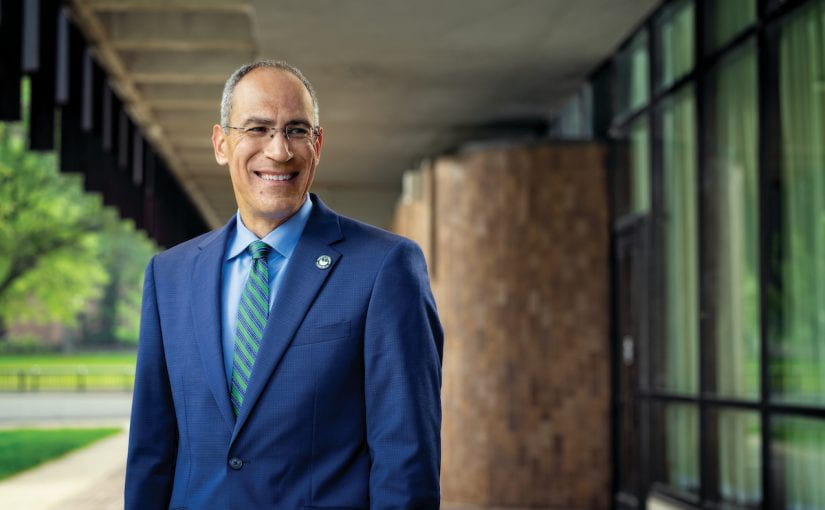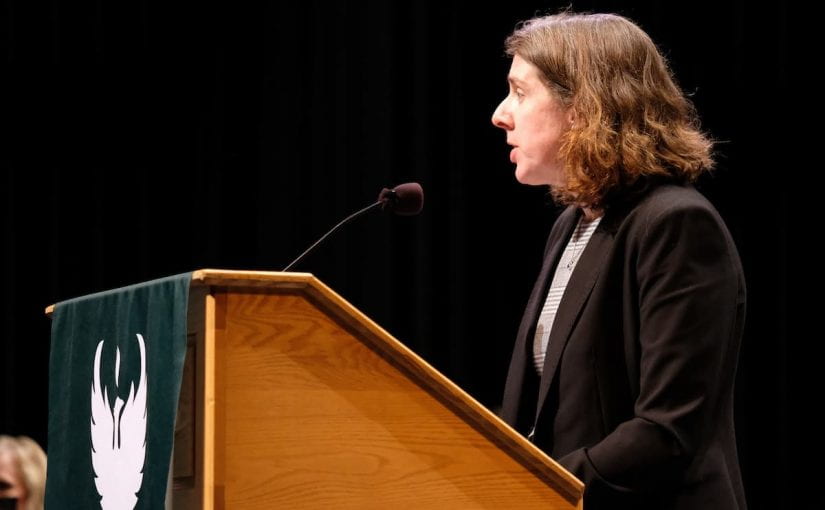Category: Announcements
-

Open Letter to the Community from Chancellor Alexander
By
|
What If Higher Education Looked Different? An Open Letter to Northeast Wisconsin, Higher education is facing an existential crisis. As technology rapidly changes how people learn and work, higher education has been slow to react. At the same time, increasing percentages of the country are questioning whether attending college is worth it. The standard models for the…
-
Message to Faculty and Staff on Thursday, April 11, 2024
By
|
Dear UW-Green Bay Faculty and Staff, Today, Deloitte’s Financial and Strategic Assessment reports will be released publicly for 7 universities. The reports discuss the economic assessment and opportunities for us as well as Oshkosh, Parkside, Platteville, River Falls, Superior, and Whitewater. Attached you will find three documents. The first talks about our current economic assessment, the second potential opportunities…
-

Open Letter to UW-Green Bay and the Region
By
|
Dear UW-Green Bay Faculty and Staff, People inside and outside of UW-Green Bay often ask me how I feel about the future of our institution, including how I see the overall higher education landscape changing and affecting us. On July 10, 2020, a few months after I began my role as chancellor and in the…
-
Thanksgiving and Winter Break University Hours
By
|
Dear UW-Green Bay Faculty and Staff, In accordance with the Office Hours and Institutional Closures Policy (HR 14-17-3), I am approving the closure of offices across UW-Green Bay (all locations) on November 25 and December 27-30. Area leaders will have the discretion to determine limited essential functions for these days in accordance with that policy. Individual employees may elect to work on a…
-

Provost and Vice Chancellor for Academic Affairs Search
By
|
Dear UW-Green Bay Faculty and Staff, I am excited to announce that Kate Burns has been appointed as the next Provost and Vice Chancellor for Academic Affairs at the University of Wisconsin-Green Bay, effective immediately. Since being named Interim Provost in May of 2020, Kate has successfully managed two years of enrollment growth in the…
-
A Big Week, A Big Thank You
By
|
The UW-Green Bay Office of the Chancellor sent the following e-mail message from Chancellor Gary Miller to the campus community on Thursday, October 12, 2017. University Community— To say that we’re at the tail end of a big week is an understatement. It started with a visit from the Higher Learning Commission, a reflective process…
-
Budget Meetings
By
|
Per communication earlier this week regarding a proposed $2M budget reduction the 2017/18 fiscal year, Chancellor Miller will visit each of the UW-Green Bay colleges and various administrative and support units to discuss and take questions. The schedule of those visits are as follows: Group 1: College of Science & Technology (Dean John Katers) Date:…
-
Expenditure Reductions
By
|
Tuesday, March 15, 2016 the UW-Green Bay Office of the Chancellor e-mailed the following memorandum from Chancellor Miller to faculty and staff regarding expenditure reductions in the coming fiscal year. Memorandum To: University Community From: Gary L. Miller Date: March 15, 2016 Subject: Expenditure Reductions
-
Academic Achievement Night
By
|
UW-Green Bay Chancellor Gary Miller e-mailed the following message to faculty and staff on Thursday, February 12, 2016. Excellence in academics is at the core of what we do as a university, and we will be emphasizing that commitment at the women’s basketball game on Thursday, February 11 at the Kress Events Center. We will…
-
Emeritus & Service Awards Presentation
By
|
On behalf of the University of Wisconsin-Green Bay, Chancellor Gary L. Miller cordially invites the campus community to a special presentation of Emeritus and Service Awards on Thursday, February 11 from 4 to 4:45 p.m. in Phoenix Room A/B of the University Union. Date: Thurs., Feb. 11 Time: 4 to 4:45 p.m. Location: Phoenix Room A/B,…

